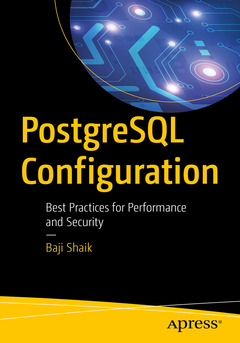PostgreSQL Configuration, 1st ed. Best Practices for Performance and Security
Auteur : Shaik Baji

Obtain all the skills you need to configure and manage a PostgreSQL database. In this book you will begin by installing and configuring PostgreSQL on a server by focusing on system-level parameter settings before installation. You will also look at key post-installation steps to avoid issues in the future. The basic configuration of PostgreSQL is tuned for compatibility rather than performance. Keeping this in mind, you will fine-tune your PostgreSQL parameters based on your environment and application behavior. You will then get tips to improve database monitoring and maintenance followed by database security for handling sensitive data in PostgreSQL.
Every system containing valuable data needs to be backed-up regularly. PostgreSQL follows a simple back-up procedure and provides fundamental approaches to back up your data. You will go through these approaches and choose the right one based on your environment. Running your application with limited resources can be tricky. To achieve this you will implement a pooling mechanism for your PostgreSQL instances to connect to other databases. Finally, you will take a look at some basic errors faced while working with PostgreSQL and learn to resolve them in the quickest manner.
What You Will Learn
- Configure PostgreSQL for performance Monitor and maintain PostgreSQL instances
- Implement a backup strategy for your data Resolve errors faced while using PostgreSQL
Casts new light on securing sensitive data
Explores data pooling to connect with other databases
Written by a PostgreSQL expert
Date de parution : 03-2020
Ouvrage de 226 p.
15.5x23.5 cm
Thèmes de PostgreSQL Configuration :
Mots-clés :
postgresql; database; performance; maintenance; security; design; patterns; availability; pooler; errors



